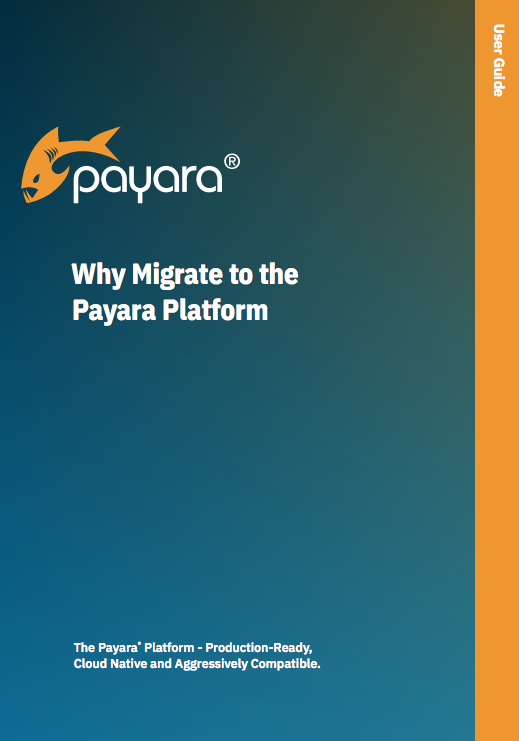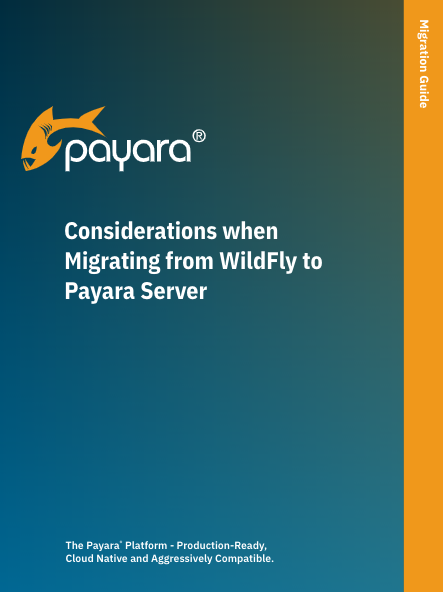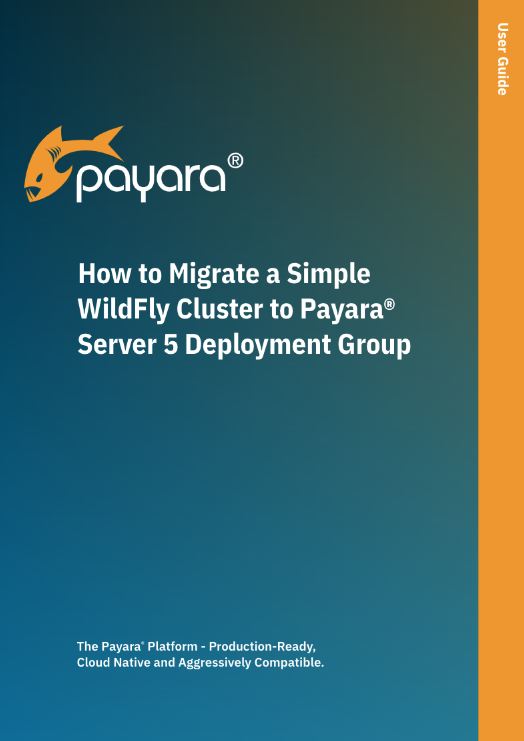WildFly to Payara Server Migration
Migrating from WildFly to Payara Server 5 can be a simple and straightforward process because both servers rely on the Java EE specifications. We make it even easier with the help of our migration resources and migration guides:
Planning a Migration to Payara Server
Before your team can start the migration process, you (and the decision makers at your organization) may need to learn more about the Payara Platform. In our ‘Why Migrate to the Payara Platform’ Guide, we’ll provide information about:
- Cloud Native, Containerized, Jakarta EE, and MicroProfile application architectures
- What makes Payara Server Enterprise the best option for production Jakarta EE (Java EE) applications
- Why Payara Micro is ideal for running Java EE applications in a modern virtualized infrastructure
- The benefits of open source software
- How new Payara Platform Enterprise features are created
- Cost advantages of the Payara Platform

WildFly vs Payara Server 5 at a Glance
Along with providing full support for our application server and more frequent component updates – migrating to Payara Server gives you access to additional features and capabilities:
| Feature | WildFly 26 | Payara Server Community 6.2022.1 | Payara Server Enterprise 5.21.0 |
|---|---|---|---|
| License | Open Source | Open Source | Open Source with EULA |
| Release Frequency | Irregular (roughly every 2 months) | Frequent, aiming monthly | Monthly |
| Production Support | No | Yes | Yes |
| Component Upgrades | Irregular (with every release) | Monthly | Monthly |
| Supported IDEs | Eclipse / NetBeans / IntelliJ IDE / Red Hat Development Suite / Visual Studio Code | Eclipse / NetBeans / Intellij IDE / Visual Studio Code | Eclipse / NetBeans / Intellij IDE / Visual Studio Code |
| Jakarta EE 8 Compatible | Yes | No | Yes |
| Java EE 8 Compatible | Yes | No | No |
| Caching Tools | Infinispan / JCache | Hazelcast / JCache | Hazelcast / JCache |
| Clustering | Every node runs same app or fine grained assignment. | Every node runs same app or fine grained assignment. Automatic clustering over multicast. | Every node runs same app or fine grained assignment. Automatic clustering over multicast. |
| Data Encryption in a Cluster | Yes | Yes | Yes |
| Web UI Administration | Yes | Yes | Yes |
| Scripting Tool | jboss-cli.sh | asadmin | asadmin |
| Admin Command Recording | Yes | Yes | Yes |
| Auditing Management Operations | Yes | Yes | Yes |
| Auditing Security Events | Yes | Yes | Yes |
| Integrated Certificate Management | No | No | Yes |
| Deployment Flexibility | Variables (System, environment, external file, MicroProfile config) | Variables (System, environment, MicroProfile config) | Variables (System, environment, MicroProfile config) |
| Notification Channels Monitoring | CDI JMS Beans Log Files | JMS Beans Log Files SMTPSNMPJMSCDISlackNew RelicDatadog | JMS Beans Log Files SMTPSNMPJMSCDISlackNew RelicDatadog |
| Custom Notifiers | No | Yes | Yes |
| Slow SQL Logging | No | Yes | Yes |
| Health Check Service | Yes via MicroProfile Health | Yes | Yes |
| Request Tracing | Yes (JAX-RS, CDI) | Yes (JAX-RS, CDI, EJB, Servlet, JAX-WS, JMS) | Yes (JAX-RS, CDI, EJB, Servlet, JAX-WS, JMS) |
| OAuth2 / OpenId Connect Support | Yes, through Elytron subsystem | Natively Supported (through Security API) | Natively Supported (through Security API) |
| Remote EJB over HTTP | Yes | Yes (partial) | Yes (partial) |
| Microservice Distribution | No | Payara Micro | Payara Micro |
| MicroProfile Support | Yes | Yes | Yes |
| Docker Support | Yes | Yes, also with container automation through Payara Docker Nodes | Yes, also with container automation through Payara Docker Nodes |
| Kubernetes Support | Yes | Yes | Yes |
| Cloud Providers Support | Microsoft Azure, Amazon, Google, Openshift, and more | Microsoft Azure, Jelastic, Amazon, Oracle Cloud, and more | Microsoft Azure, Jelastic, Amazon, Oracle Cloud, and more |
| Zero Deployment Downtime | No | Switch between pre-deployed versions; Rolling upgrade in a cluster | Switch between pre-deployed versions; Rolling upgrade in a cluster |
| Hot Deployment | No | Yes for NetBeans IDE | Yes (for NetBeans IDE, support for other IDEs coming soon) |
| Upgrade Tool | Yes | No | Yes |
| JDK 11 Support | Yes | Yes | Yes |
| Bundled JDK Support | Yes – RHEL and Windows | Yes – Linux and Windows | Yes – Linux and Windows |
| Migration from Community to Enterprise edition | Challenging (Wildfly to JBoss EAP migration) | Simple (Payara Community to Payara Enterprise migration) | Simple (Payara Community to Payara Enterprise migration) |
| Integrated Monitoring Console | No | Yes | Yes |
Payara Micro and Docker

Considerations When Migrating from WildFly to Payara Server
Migrating applications from WildFly to Payara Server can be a simple and straightforward process because both servers rely on the Jakarta EE (Java EE) specifications. However, there are differences in many areas because many Java EE APIs in WildFly and Payara Server are implemented by different components. Moreover, the configuration of certain aspects like external resources, high-availability and deployment is not covered by any specification and is, in fact, very different in both servers.

How to Migrate a Simple WildFly Cluster to Payara Server 5 Deployment Group
This guide will explain the differences between clustering in WildFly and Payara Server, how to plan migration of an existing WildFly cluster to Payara Server, and will also show you how to migrate an example cluster step-by-step.
Get You Started with Payara Server Enterprise
Book a FREE demo or contact our team to explore how Payara Server Enterprise supports secure, stable, and high-performance Java applications. Access resources to get started quickly or dive deeper into the platform.